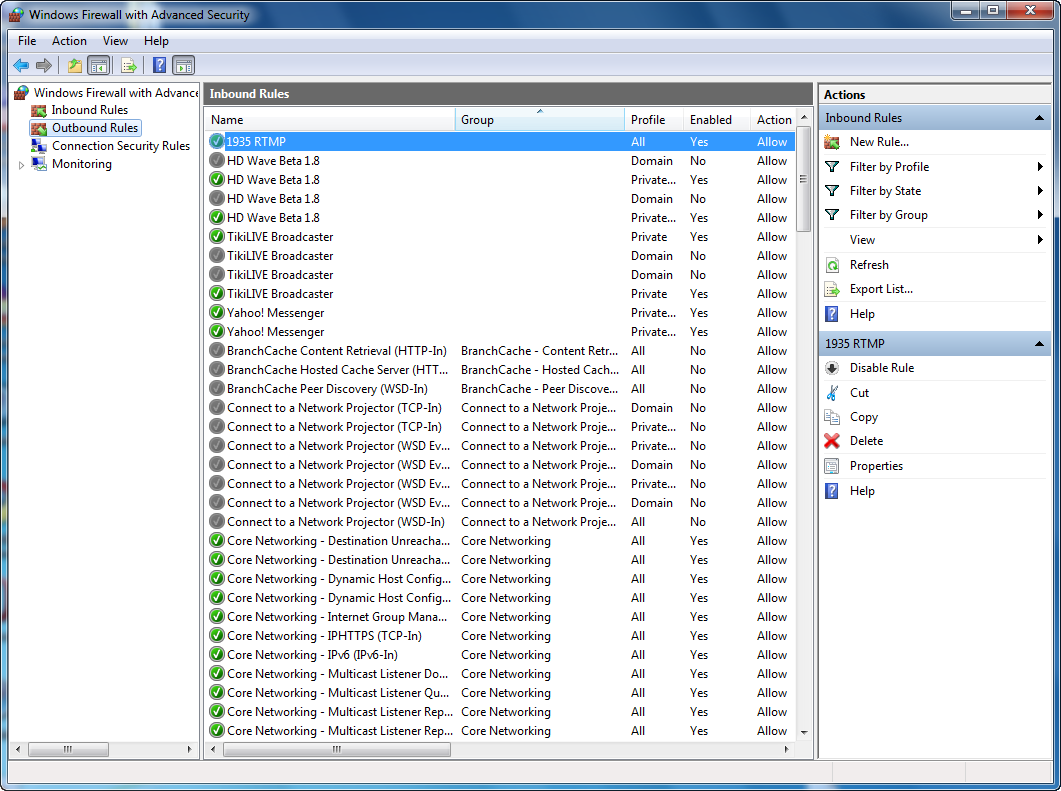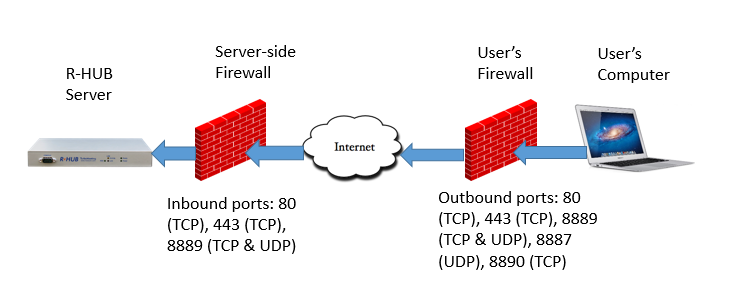
Based on past testing with HMA, its London server for some reason has lower latency than its Irish server, so connected to London and got a HTTPS-like speed test with the plain HTTP test. I established a VPN connection to the HMA's Irish server and got about 3.5Mbps with the plain HTTP test. The following was an example about 4:30pm, HTTP vs Port 8080:
#Firewall ports needed by ookla speedtest series#
I never thought of bringing my laptop at work, so was limited to running the HMA App directly on the phone.Īfter about 4pm, Three was giving a fairly steady 2.0Mbps to 2.5Mbps over HTTP and 4.5Mbps to 5Mbps over both HTTPS and port 8080 based on a series of TestMy tests. I really appreciate your comparisons and suggestions to help detect this scam deeper, you're making TMN a better tool.Īs the Three mobile network here still gives traffic priority over both HTTPS and port 8080, I tried some experimenting with HMA's VPN to see if I can exploit it. Has to be borderline illegal in some way, right? I really hope that more people start finding TMN so they can know the real deal. Purposely allowing ports that they know speedtest/ookla uses to be faster and throttling back others. I also need to build in a way to quickly differentiate the port 8080 and https tests in the results. I think it will work great to build groups of users that want to build a claim like this. I'm creating an addition per another users suggestion that just came in. We need more proof across a wider demographic. And if they're doing it, you know that others do as well. Really the only other probable way you could get a result that dramatic when you keep the variables that l evel is if you purposely throttled back your own connection. I suspect it will be faster than the HTTPS test above as it seems to throttle even HTTPS after about 20MB of data is transferred: So now I'm curious to repeat these tests with HTTP vs port 8080, especially with Vodafone which does its speed demonstrations using Ookla's App. The Three network here seems to be throttling HTTP again, so there's also a stark difference between HTTP and HTTPS again: While on my way to work, I stopped in an area where I get a strong 4G signal and used TestMy with HTTP vs HTTPS:

Indeed there was a stark difference with the Vodafone 4G network, with the default test on the left and port 8080 blocked on the right: Basically I ran the speed test with all its ports opened (Speedtest used port 8080 like the browser test) and then repeated the test with only TCP ports 80 & 443 enabled. With the Ookla App, I was able to force it to use port 80 with the help of the NoRoot Firewall App. It will probably be Wednesday before I get a chance to do some testing with the 4G networks. Then it would just be a matter of typing :8080 to perform the test on port 8080 with suspect ISPs, such as those that seem to throttle ports 80 (HTTP) and 443 (HTTPS). I don't think it will require much configuration other than configuring the various test servers to also accept traffic on port 8080. So an interesting idea would be if TestMy could add support for port 8080. Once I open up port 8080 and click 'Test Again', the next test runs on port 8080 again. The speed test took a little longer to start, but once it did, it switched over to port 80, in this case with two threads: I then thought - Is port 8080 necessary for Ookla's Speedtest? To find out, I blocked port 8080 on my PC. On the other hand, by running the speed tests over port 8080, this makes it easy for ISPs to prioritise traffic for anyone using Ookla's speed test as all they have to do is give elevated QoS for traffic running over port 8080. Port 8080 is typically used for an internal web proxy within corporate networks and for an ISP cache proxy in the early days of Internet for faster access to popular websites.

For example, HTTP and HTTPS traffic are carried over ports 80 and 443, respectively, while FTP traffic is carried over ports 20 and 21. It seemed like no matter what test server I tried, it ran its test over port 8080, which is a seldom used port for web traffic. While the multiple connections doesn't surprise me (Ookla's tests are all multi-threaded), what I was surprised with was what port it used - 8080: I sorted the traffic by 'Received Bytes' and then started a speed test. As I noticed some ISPs return considerably quicker speed tests with Ookla's speed than what's possible with regular web access including TestMy, I decided to snoop at how Speed test establishes its connection using Sysinternals' TCPView utility.


 0 kommentar(er)
0 kommentar(er)
